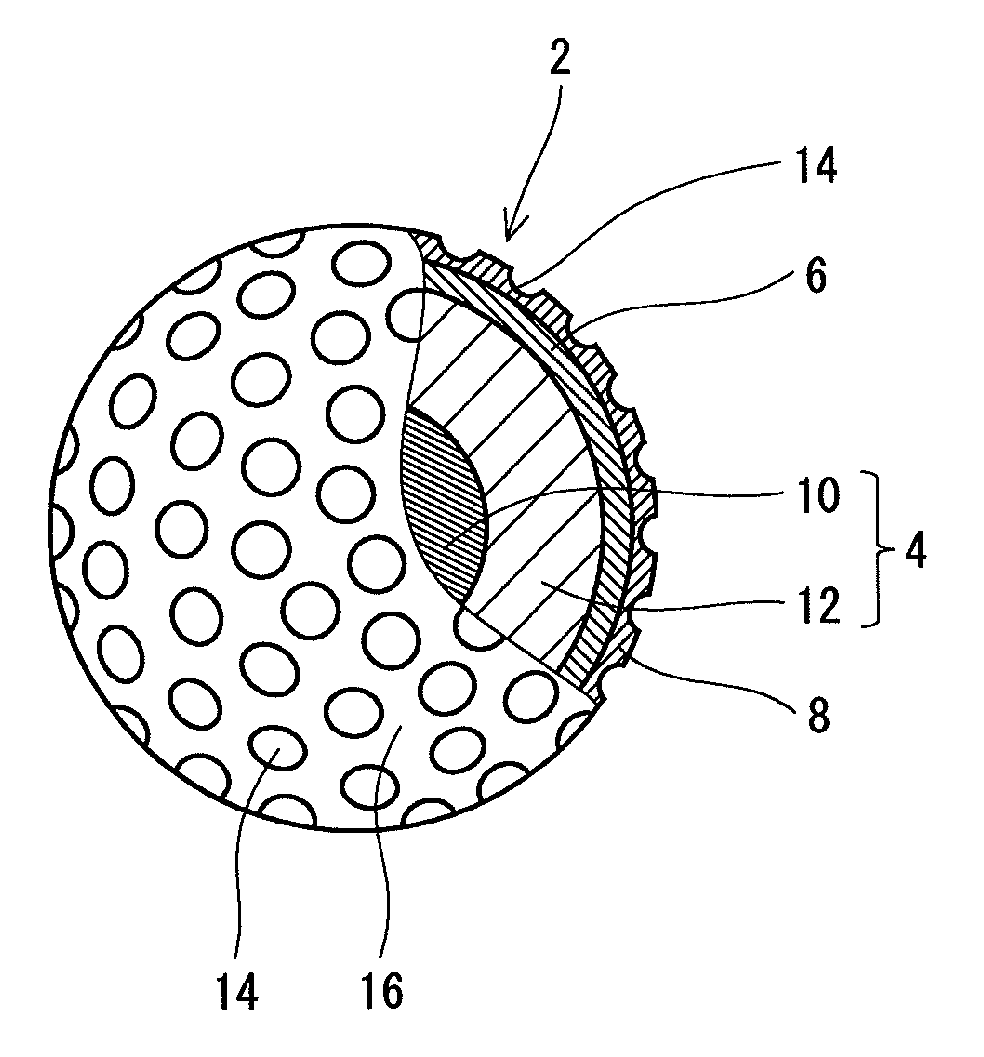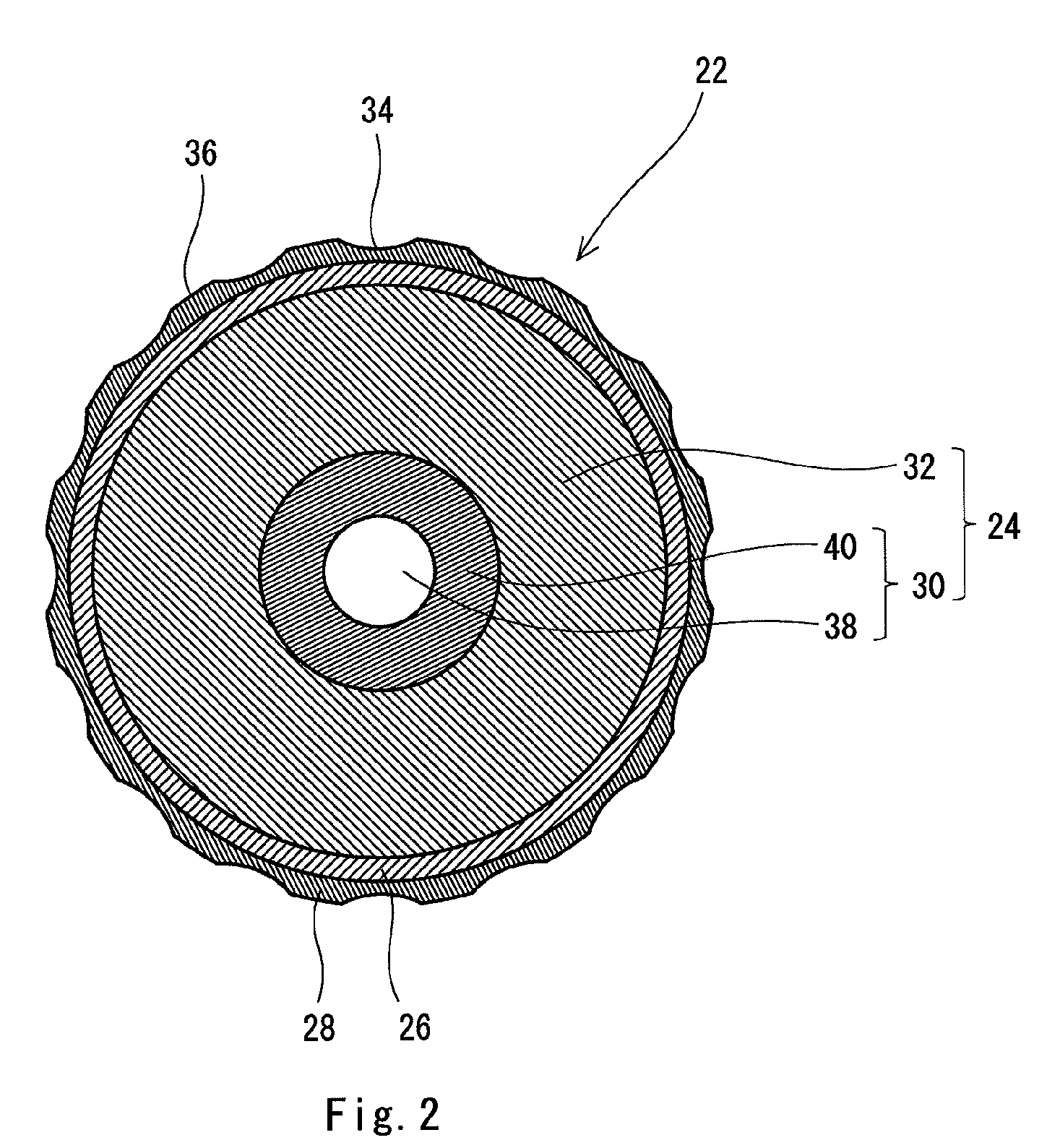Golf ball
a golf ball and ball technology, applied in the field of golf balls, can solve the problems of inability to contribute to resilience performance, inability to reduce the hardness difference (h4h3) of the envelope layer, and inability to suppress spin
- Summary
- Abstract
- Description
- Claims
- Application Information
AI Technical Summary
Benefits of technology
Problems solved by technology
Method used
Image
Examples
experiment 1
[Experiment 1]
[Example 1]
[0205]A rubber composition (a) was obtained by kneading 100 parts by weight of a high-cis polybutadiene (trade name “BR-730”, available from JSR Corporation), 5 parts by weight of zinc oxide, an appropriate amount of barium sulfate, 10 parts by weight of silica (trade name “Nipsil AQ”, available from Tosoh Silica Corporation), 2.20 parts by weight of a sulfenamide type vulcanization accelerator (the aforementioned “Nocceler CZ”), 2.26 parts by weight of a guanidine type vulcanization accelerator (the aforementioned “Soxinol DG”), and 3.4 parts by weight of sulfur. The rubber composition (a) was placed into a mold that included upper and lower mold halves each having a hemispherical cavity, and heated at 150° C. for 5 minutes to obtain a center with a diameter of 10 mm.
[0206]A rubber composition (f) was obtained by kneading 100 parts by weight of a high-cis polybutadiene (the aforementioned “BR-730”), 29 parts by weight of zinc diacrylate, 5 parts by weight o...
experiment 2
[Experiment 2]
[Example 12]
[0223]A rubber composition (a) was obtained by kneading 50 parts by weight of a high-cis polybutadiene (trade name “BR-730”, available from JSR Corporation), 50 parts by weight of a natural rubber (KR-7), 5 parts by weight of zinc oxide, an appropriate amount of a clay, 5 parts by weight of silica (trade name “Nipsil AQ”, available from Tosoh Silica Corporation), 2.20 parts by weight of a sulfenamide type vulcanization accelerator (the aforementioned “Nocceler CZ”), 2.26 parts by weight of a guanidine type vulcanization accelerator (the aforementioned “Soxinol DG”), and 3.4 parts by weight of sulfur. The rubber composition (a) was placed into the mold shown in FIG. 3, to obtain a semi-crosslinked half shell. Ammonium chloride, sodium nitrite, and water were put into the half shell. A rubber cement in which the rubber composition (a) was dissolved in a solvent was applied to a joining surface of the half shell. The half shell was fitted with another half she...
PUM
 Login to View More
Login to View More Abstract
Description
Claims
Application Information
 Login to View More
Login to View More - R&D
- Intellectual Property
- Life Sciences
- Materials
- Tech Scout
- Unparalleled Data Quality
- Higher Quality Content
- 60% Fewer Hallucinations
Browse by: Latest US Patents, China's latest patents, Technical Efficacy Thesaurus, Application Domain, Technology Topic, Popular Technical Reports.
© 2025 PatSnap. All rights reserved.Legal|Privacy policy|Modern Slavery Act Transparency Statement|Sitemap|About US| Contact US: help@patsnap.com



